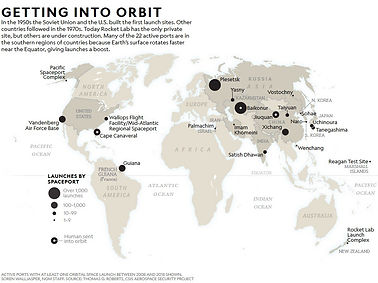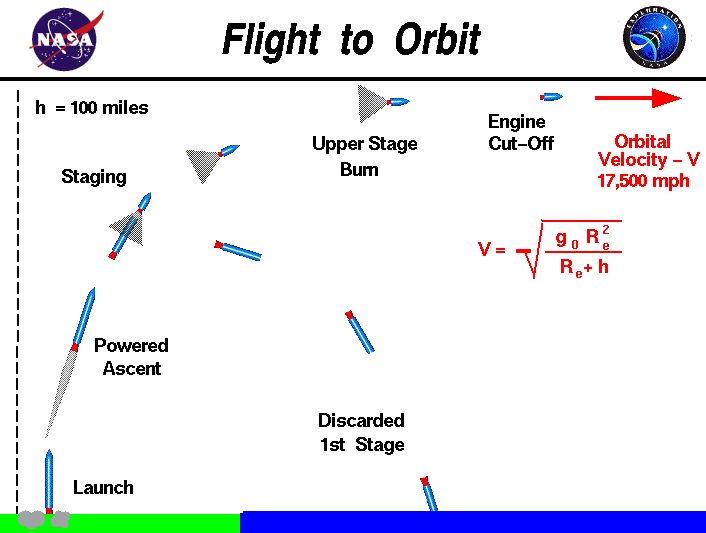
01
What is the impact of atmospheric drag during a rocket launch?


To reach the stars you have to encounter the atmosphere of Earth. The main barrier to going to space is atmospheric drag.
The equation for drag D = ½ ρv²CdS
D = Drag, which is the force that slows the rocket down. It pushes against the rocket or spacecraft and can have serious consequences to your rocket. If the rocket doesn’t decrease its engine power to 60% during Maximum Dynamic Pressure (Maxq) , it won't move any faster and/or disintegrate, no matter what material you use.
p=rho or density, a fancy word for the thickness of the air. As the rocket moves further away from the earth, the density of air decreases and so does drag, as per the equation. Density of the air varies at different altitudes, since air expands when it is warmed by the sun. When the spacecraft reaches space, the density is now zero which means, there is zero drag.
v=Velocity, or the speed of the rocket/spacecraft. In the equation, drag is the function of velocity times velocity. Therefore, as the velocity of the spacecraft increases, so does drag, which increases rapidly -2 times of the velocity, four times of drag, etc. . The velocity increases without increasing drag only when the rocket reaches space, since the density of space is 0.
Cd = the coefficient of drag, which is a characteristic of vehicle streamlining and surface roughness. Because this value is heavily fixed on the rocket it is frequently disregarded
S= the cross-sectional area of a rocket or spaceship. A lower area greatly reduces the effects of drag on the spaceship. Atmospheric drag is a problem of spacecrafts or stages that are still in the atmosphere than spacecrafts or stages in orbit, which can be in an ungainly shape and is why rockets are streamlined. (Note: Sometimes, the drag equation is written using the letter A to indicate the area)
02
Where is the best place to launch a rocket?
The location of launching a rocket comes down to physics. As a general rule, rockets launch as close as possible to the equator to gain advantage of our planet’s rotation, which is high at the equator -approximately 1000 miles per hour. The more orbital velocity a rocket gets from Earth, the rocket needs less fuel in order to reach the speed required to get into orbit.

03

What is the speed required to get into orbit?
In order to go to orbit, rockets must reach a certain speed to escape gravity. That speeding is called orbital speed. It equals Mach 25, five miles per second, or eight kilometers per second. A bullet can’t even go half as fast! The faster the rocket goes, the further the rocket gets. After a rocket does a powerful engine burn, it will be able to fly into deep space, escaping Earth, or any planet’s gravitational pull. This speed is called escape velocity, which is 41 percent faster than orbital velocity.
04
Why do we see water when a rocket launches?
When a rocket launches, its engines don't just produce incredible heat it also produces sound. This sound is so loud that it would seriously damage everything that is really close to it. According to NASA, the Saturn V, the rocket that took astronauts to the moon, produced 220 decibels (DB). Sounds that loud wouldn’t just rupture your eardrums, if you were close to the engines, it would kill you. So, engineers came up with a unique solution. By spraying one million pounds of water during liftoff, it greatly reduces the noise level of the rocket. As the sound waves meet water, air bubbles absorb the sound waves and heat up, turning sound energy into heat energy. Also, the use of water bags will further dampen the sound waves. The use of water will also extinguish any fires that occur during launch. These two sound suppression systems reduced the space shuttle’s sound level from 195 DB to 142DB. The problem for the water deluge system is that it can’t be used for launchpads in the north since the water will freeze into ice, making it useless. The solution to this problem is to construct a larger flame trench which means that it would be less likely for the sound waves to reflect back onto the rocket.



